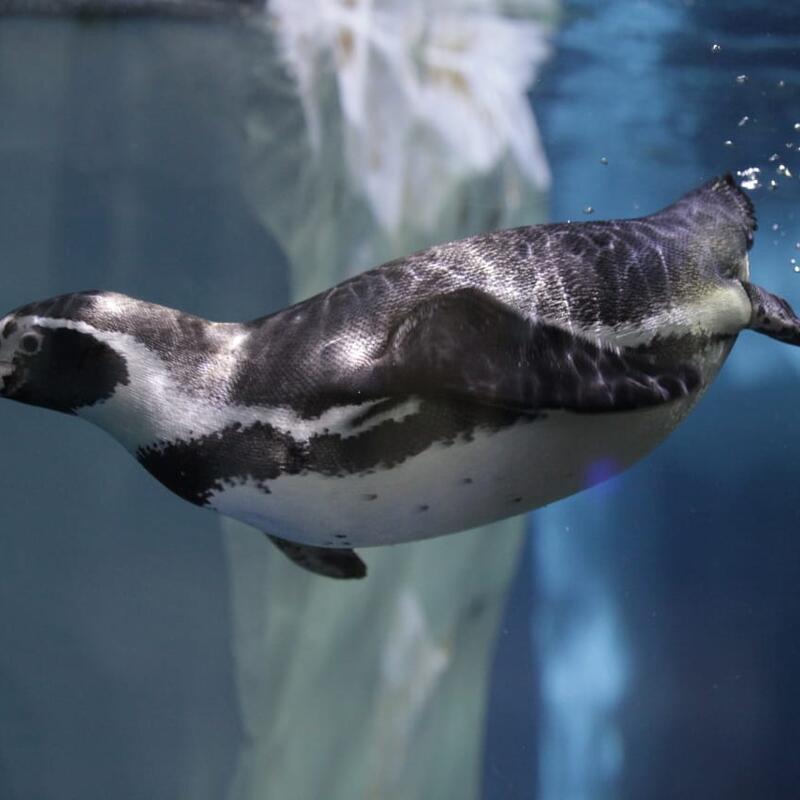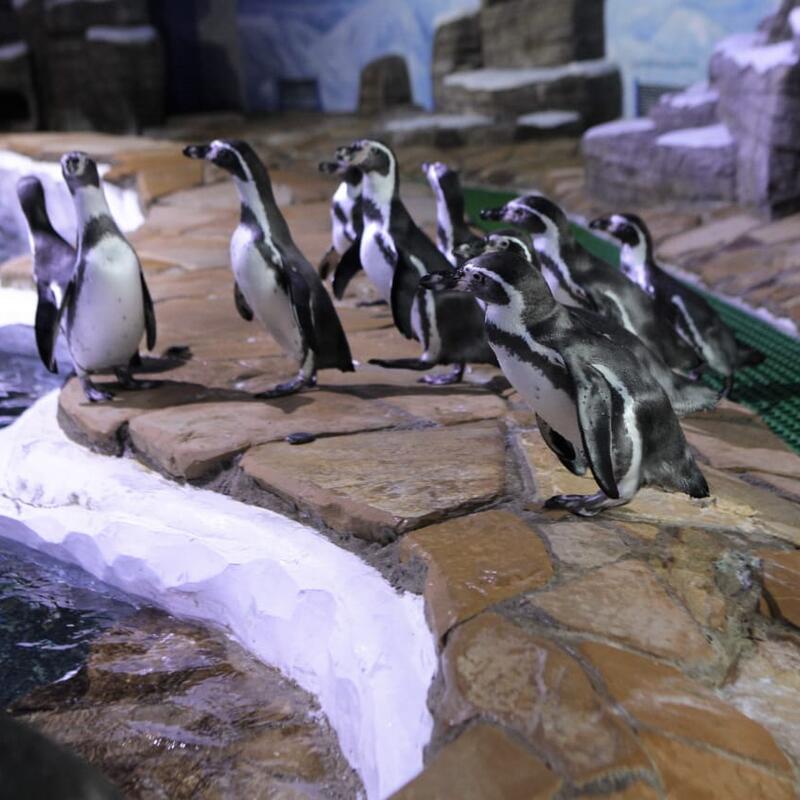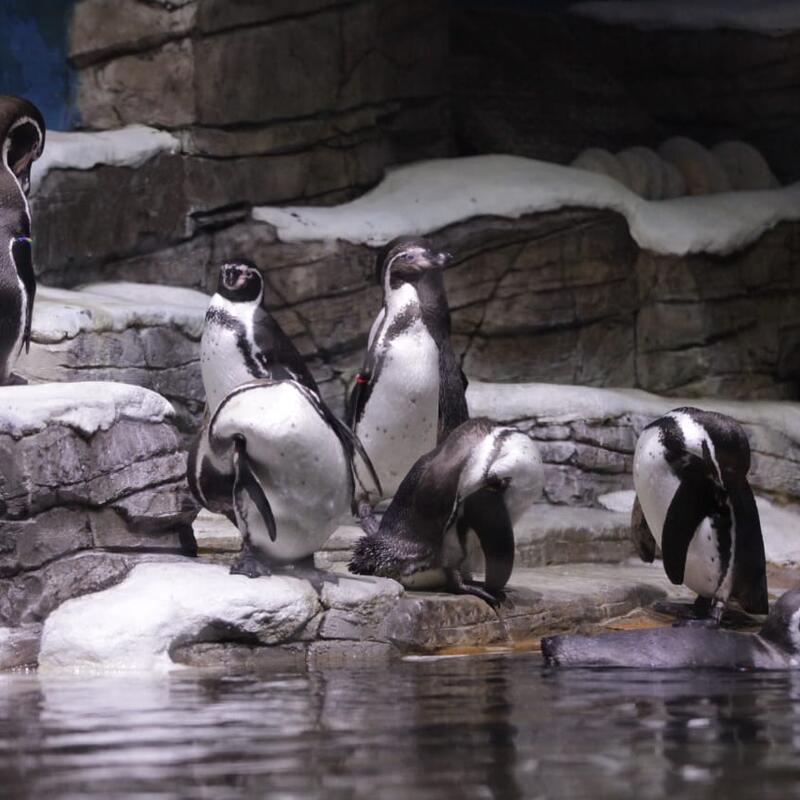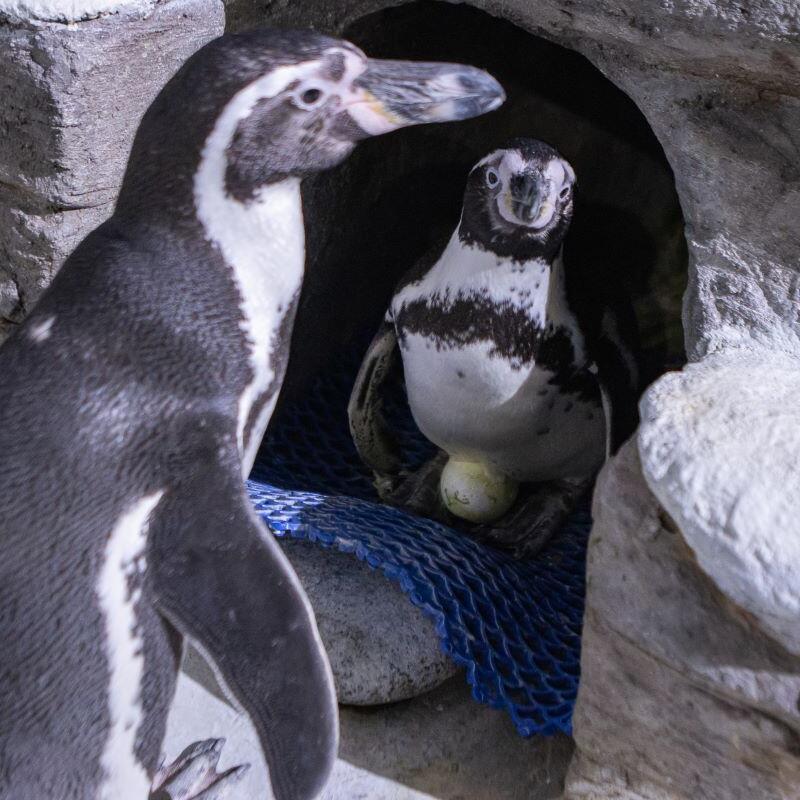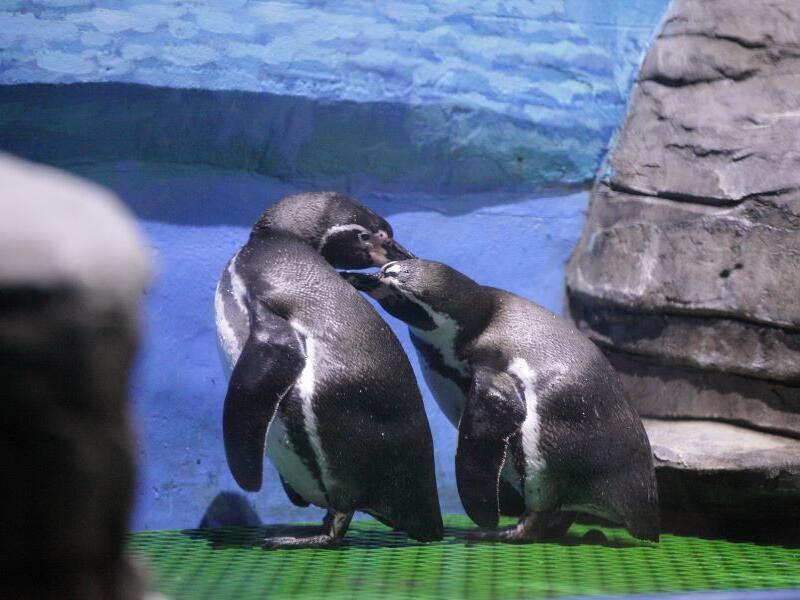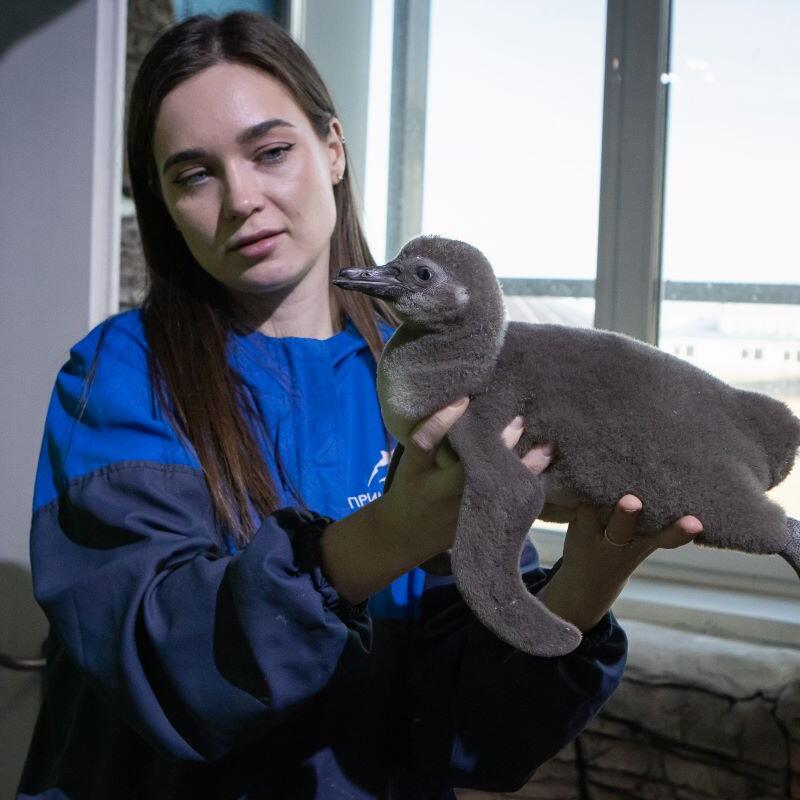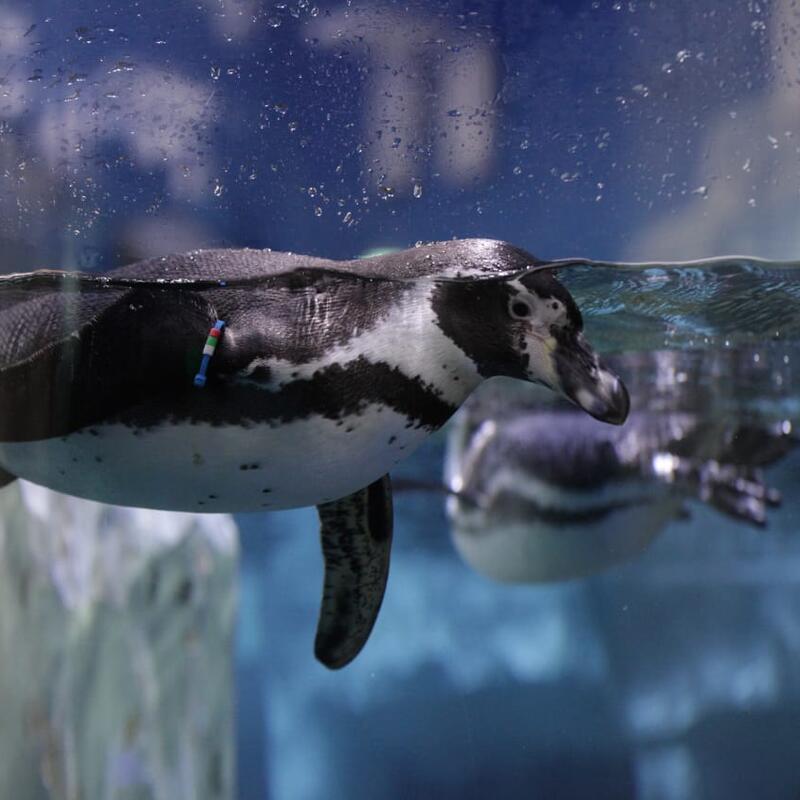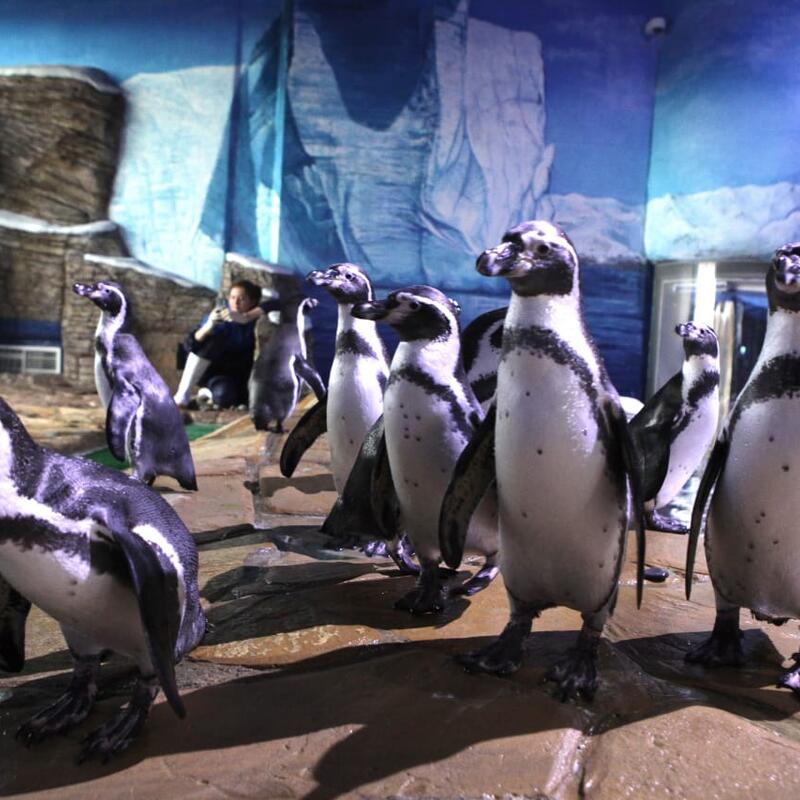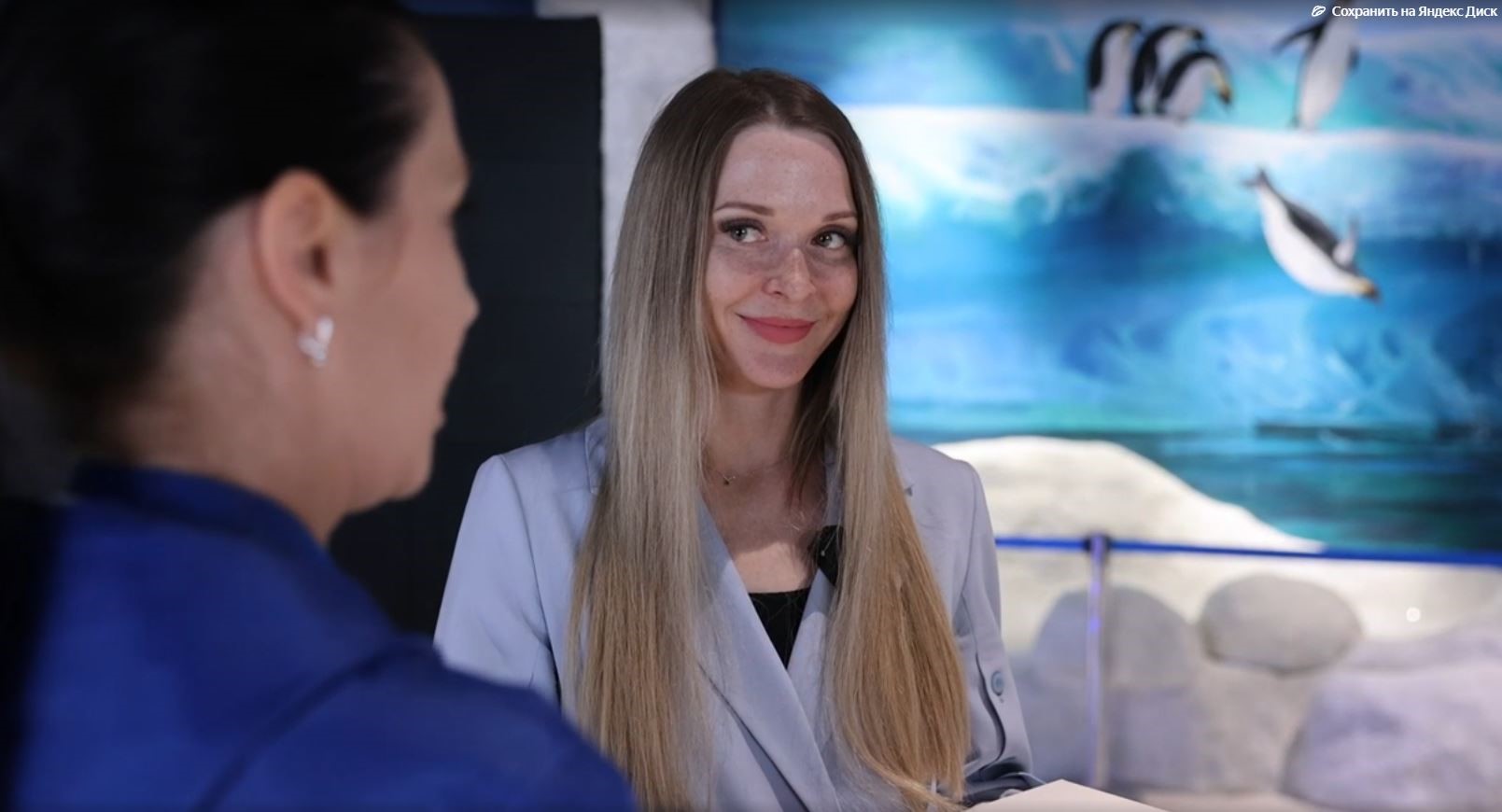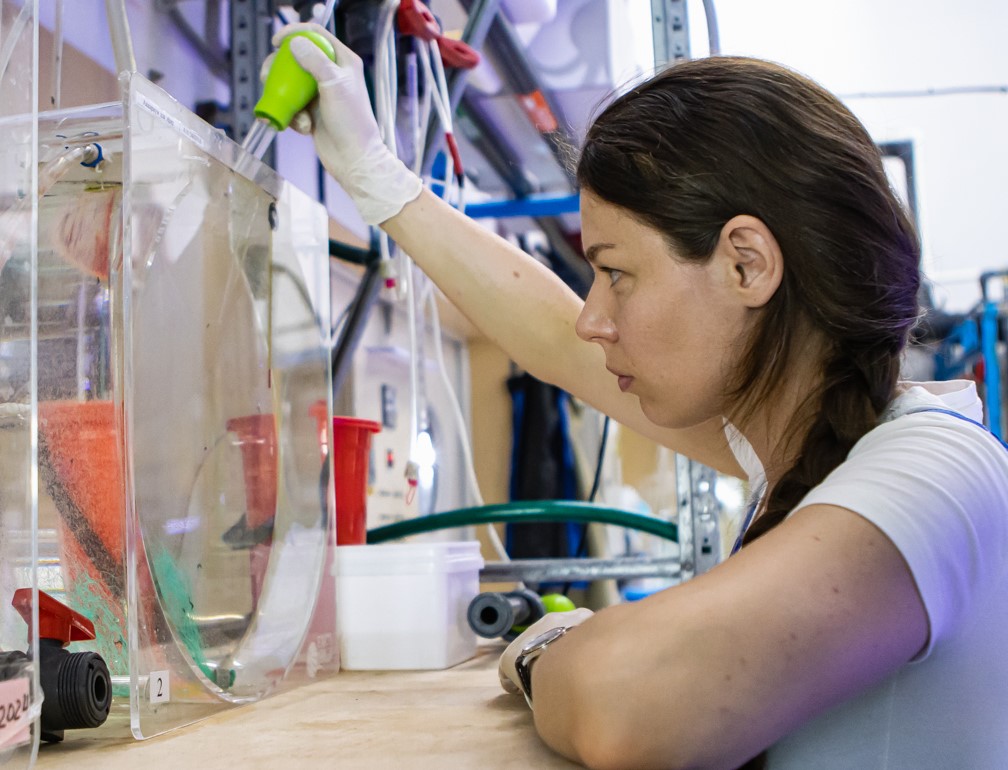Penguin Awareness Day is celebrated every year on 20 January. For the Primorsky Aquarium, it was the first, but not the last celebration of those flightless birds, as 2025 is declared the Year of Humboldt Penguins here.
Spheniscidae, or Penguins, is a large family. Members of this group live in the Southern Hemisphere, from ice-covered Antarctica to the coastal forests of New Zealand to Galapagos Islands. The family includes 18 species, which differ from each other a lot. The largest is Aptenodytes forsteri, or the emperor penguin, with a maximum length of 120 cm, while Eudyptula minor, or the little penguin, from Australia is smaller than a cat. Some species, like the macaroni penguin Eudyptes chrysolophus or the Adélie penguin Pygoscelis adeliae, are relatively numerous, while the Galápagos penguin Spheniscus mendiculus is listed as Endangered in the IUCN Red List, because its population has declined to 1500–2000 individuals in recent decades. This species is particularly vulnerable to the climate phenomenon known as El Niño: the unusually high sea surface temperature in the tropical Pacific Ocean that results in phytoplankton decrease and the subsequent reduction in fish populations, the primary food of penguins. Another species at risk is the emperor penguin. As British scientists predict, its population may drop by up to 99% by 2100 due to Antarctic ice melting.
The Primorsky Aquarium plays its part in biodiversity conservation. Humboldt penguins Spheniscus humboldti, listed as Vulnerable in the IUCN Red List, have lived in the Aquarium since 2018. Their habitat in the wild is the rocky coasts of Chile and Peru and they face the same threat as the Galápagos penguin, El Niño. Humboldt penguins have significantly reduced in numbers over their historical range since the 19th century.
The Primorsky Aquarium team managed to diligently recreate penguins’ natural environment, and the birds strive here and readily reproduce. About 40 chicks have hatched in the last six years, and the flock has multiplied more than four times. As you may remember, in 2018 the Primorsky Aquarium had only 14 birds that came from a penguin hatchery in Prague (the Czech Republic).
Penguins are visitors’ favorites and, though fidgeting and noisy, are beloved “babies” for Aquarium keepers. Every penguin has their own personality and habits. A simple task of feeding them is not that simple, as it turns out. During molting the birds eat very little, but before it they devour lots of smelt and capelin. When the whole flock is already full, those who are going to molt will ask for more food until the bucket is completely empty.
“Galochka, one of the largest and heaviest males, ate over 40 big smelt one day. Note that an average penguin weighs 4,5 to 5 kilos.” Ilia Kuzora, Lead Specialist of the Ornithology Department says. “Pukhliash and Pugovka regularly bring fish to their nest to feed each other. Krylo is a wayward girl and doesn’t let anyone approach. She jumps on food and always tries to peck at your hand. Bamby, one of the last hatchlings, is the opposite: he never pecks, but always takes fish very gently.”
Penguin celebrations are not limited to a one-day event at the Primorsky Aquarium. We announced 2025 as the Year of Humboldt Penguins, and all penguin fans will enjoy a variety of quizzes, competitions, interviews, and more. And the cherry on top will be the publication of a book about the first penguin chick born at the Aquarium. See you at the next penguin event!




